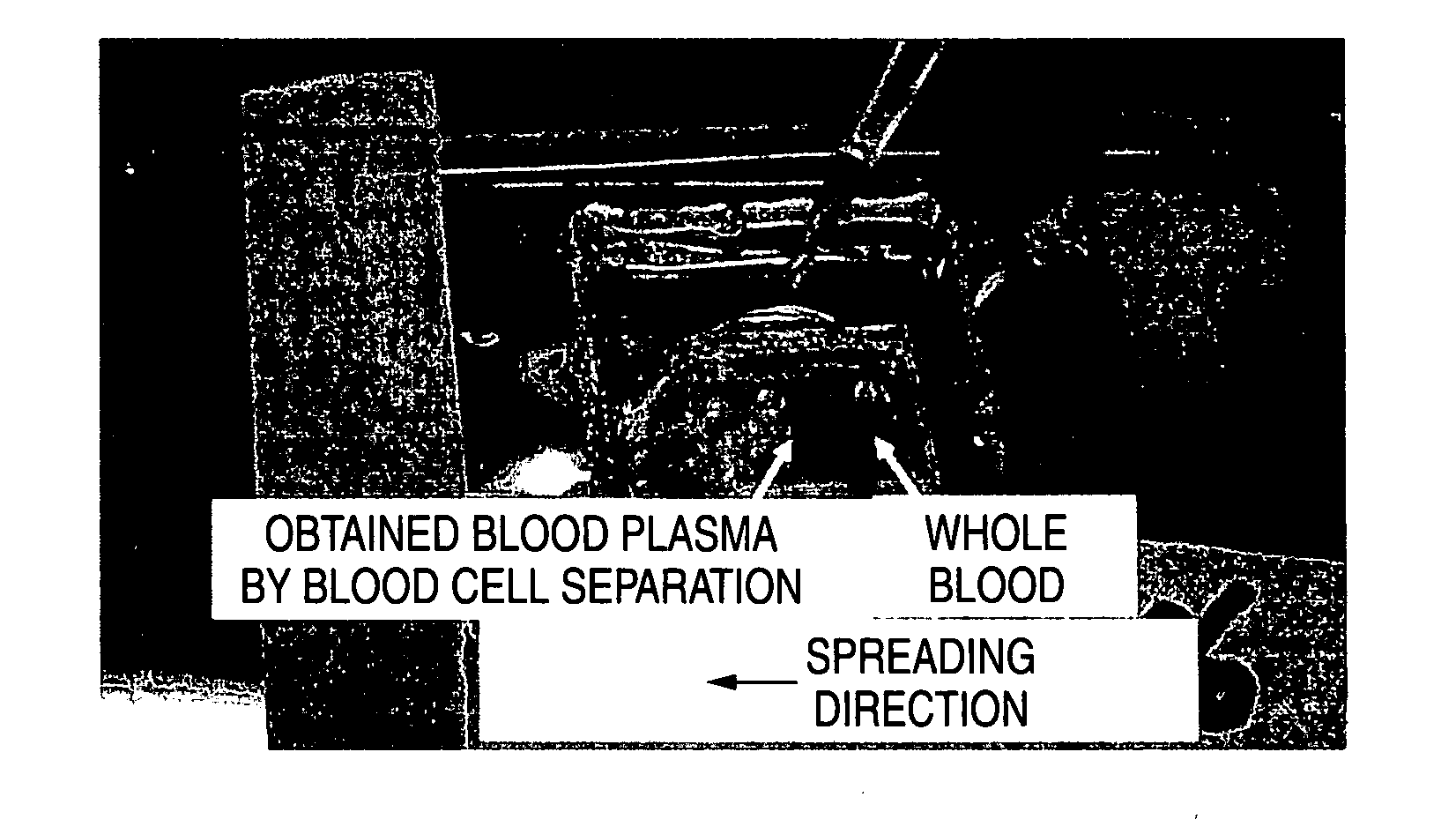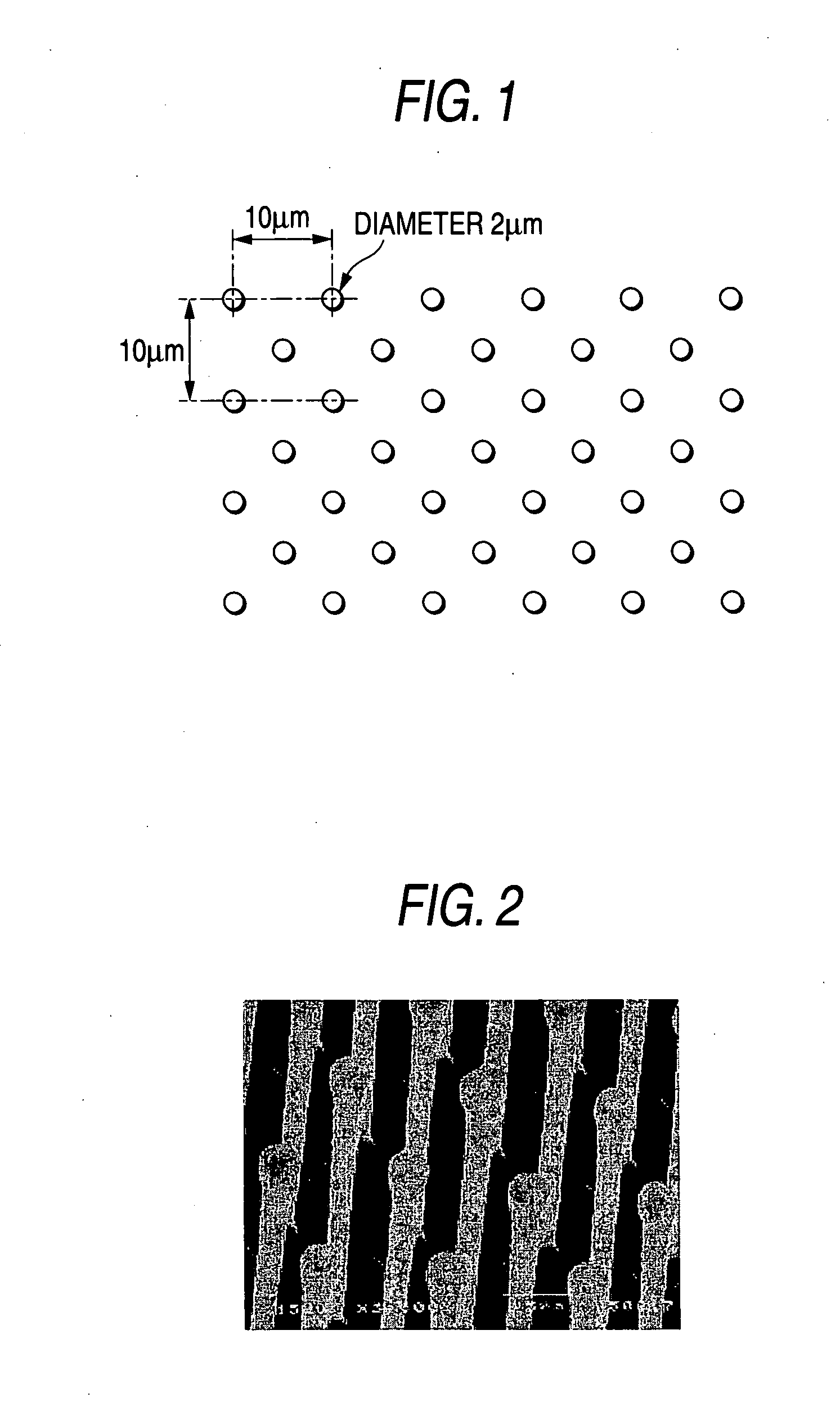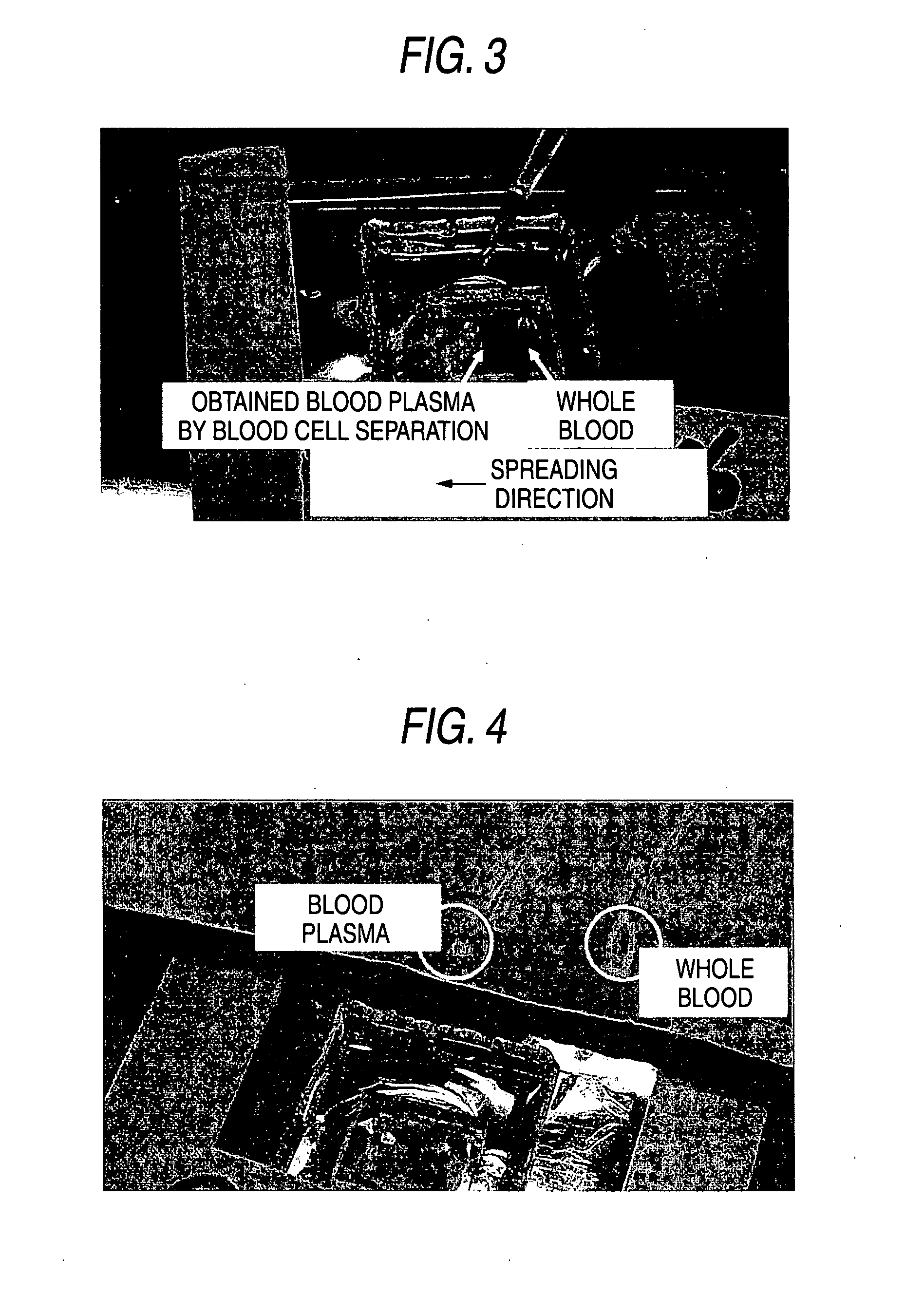Filter for separating blood cells
a filter and blood cell technology, applied in the separation process, laboratory glassware, instruments, etc., can solve the problems of difficult to fill glass fiber filters, and glass fiber filters are difficult to fill
- Summary
- Abstract
- Description
- Claims
- Application Information
AI Technical Summary
Benefits of technology
Problems solved by technology
Method used
Image
Examples
example 1
Preparation of Blood Cell Separation Filter Using Resin-Made Micropillars and Result of Blood Filtration
(A) Preparation of Resin-Made Micropillars
[0219] Resin-made micropillars having an equivalent circle diameter of 4 μm or less and being fixed to a substrate with contact points were prepared by the following procedures.
[0220] A silicon wafer was dry etched using a semiconductor processing technology to form wells each having a diameter of 3 μm and a depth of 20 μm at a distance of pitch 10 μm in a checkered pattern over an area having a width of 10 mm and a length of 10 mm. Thus, a mold for use in imprinting was prepared. Using this mold made of a silicon wafer, heat and pressure were applied to a plate of a polystyrene (PS) resin to prepare resin-made micropillars by an imprinting method. The micropillars prepared had a diameter of 2 μm and a height of 27 μm and were arranged in a checkered pattern at a distance of pitch 10 μm. The region on which the pillars could be prepare...
example 2
Capture of Red Blood Cell Using Silicon-Made Micropillars
[0223] Using an apparatus MC-FAN (a product of Hitachi Haramachi Electronics Co., Ltd.) that measures by observing flow of a blood, a shape of a custom chip used for observation of MC-FAN was modified as application of conducting observation of dynamic form when cells such as red blood cells pass through a fine flow passage, thereby preparing a custom chip having provided columnar projections generally called pillars in the flow passage of the chip. Specifically, a silicon wafer was used as a substrate, the silicon wafer was dry etched using a semiconductor processing technology, and the surface of the silicon wafer was further oxidized. Pillars were prepared to have a constant height of 3.5 μm, and a diameter of 3 μm and 4 μm. The pillars were arranged with three lines at a constant pitch of 20 μm toward a direction flowing a blood. Whole blood of a healthy man collected using a heparin lithium blood collecting tube was flow...
example 3
Preparation of Flat Plate Chip (Fitting Type Dry Elemental Device) and its Result
(A) Preparation of Flat Plate Chip (Fitting Type)
[0225] The dry analytical device 50 by fitting the upper member 30 and the lower member 40 shown in FIG. 12 through the porous membrane 52 was prepared according to the following procedures.
[0226] The upper member 30 and the lower member 40, each having a size of about 24 mm×28 mm, molded using a transparent polystyrene were provided. Diameter of the fitting projected portion 35 and the fitting depressed portion 46 was about 9 mm.
[0227] Glass fibers obtained by previously treating a glass filter paper (GF / D, a product of Whatman Co.) for red blood cell capturing and blood plasma extraction and then being subjected to PMEA treatment, as a filtration filter 36 (analytical element) were tightly fixed to the flow passage 34 using a double-sided tape, and filled therein. Length of the glass fibers was apparently longer that an equivalent circular diameter...
PUM
| Property | Measurement | Unit |
|---|---|---|
| height | aaaaa | aaaaa |
| distance | aaaaa | aaaaa |
| height | aaaaa | aaaaa |
Abstract
Description
Claims
Application Information
 Login to View More
Login to View More - R&D
- Intellectual Property
- Life Sciences
- Materials
- Tech Scout
- Unparalleled Data Quality
- Higher Quality Content
- 60% Fewer Hallucinations
Browse by: Latest US Patents, China's latest patents, Technical Efficacy Thesaurus, Application Domain, Technology Topic, Popular Technical Reports.
© 2025 PatSnap. All rights reserved.Legal|Privacy policy|Modern Slavery Act Transparency Statement|Sitemap|About US| Contact US: help@patsnap.com



